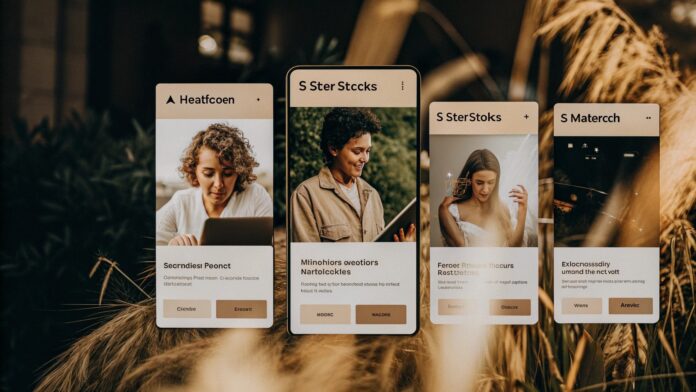In recent years, wearable technology has completely transformed the way we monitor and understand our health. From smartwatches that track your heart rate to fitness bands that count every step you take, wearable devices have made health tracking easier, smarter, and more personal than ever before. These small but powerful gadgets are helping people take charge of their well-being in ways that were once only possible in hospitals or clinics.
Let’s explore how wearable technology is changing health tracking and why it’s becoming such an important part of our daily lives.
1. What Is Wearable Technology?
Wearable technology refers to electronic devices that you can wear on your body—such as smartwatches, fitness trackers, smart rings, and even smart clothing. These devices are equipped with sensors that collect data from your body, such as your heart rate, steps, temperature, sleep patterns, and more.
Some popular examples include:
- Apple Watch and Samsung Galaxy Watch
- Fitbit fitness trackers
- Oura Ring
- Garmin smart bands
- Whoop Strap
These devices sync with mobile apps, allowing users to monitor their health metrics in real time and make lifestyle changes accordingly.
2. How Wearable Technology is Revolutionizing Health Tracking
a. Real-Time Health Monitoring
One of the biggest advantages of wearable technology is real-time health tracking. Unlike traditional checkups, which happen occasionally, wearables continuously collect health data. You can instantly see your heart rate, oxygen levels, or calorie burn on your wrist. This continuous feedback helps people stay more aware of their physical state and make immediate changes if something seems off.
For example, a smartwatch can alert you if your heart rate suddenly spikes or drops, helping you take action before a problem worsens.
b. Encouraging a Healthier Lifestyle
Wearable devices have become personal health coaches. They remind users to stay active, drink water, and get enough rest. Many devices use gamification—like badges, goals, or step challenges—to motivate people to move more and maintain a balanced lifestyle.
These small nudges make a big difference. According to studies, people who use fitness trackers are more likely to reach their daily activity goals and maintain a healthy weight.
c. Sleep Tracking for Better Rest
Good sleep is essential for overall health, yet many people struggle with poor sleep habits. Wearable technology has made it easier to understand and improve sleep quality. Devices like the Fitbit or Oura Ring can track your sleep duration, stages (light, deep, REM), and even detect disturbances during the night.
This information helps users identify patterns—like going to bed too late or drinking caffeine before sleep—and adjust their routines for better rest.
d. Heart and Oxygen Monitoring
Modern wearable devices can measure heart rate, blood oxygen (SpO₂), and even detect irregular heart rhythms (like atrial fibrillation). This data isn’t just useful for fitness enthusiasts—it’s lifesaving for people with chronic health conditions.
For instance, Apple Watch’s ECG (electrocardiogram) feature can detect irregular heartbeats, and if something unusual occurs, it sends alerts to the user and even suggests seeking medical attention. Some devices can even share this data directly with your doctor for continuous remote monitoring.
e. Detecting Early Signs of Illness
Wearables can also identify early signs of illness by spotting unusual patterns in your body’s data. For example, a sudden increase in heart rate or body temperature might indicate infection or stress before symptoms fully appear. During the COVID-19 pandemic, some researchers used wearable data to detect early signs of infection even before people felt sick.
This predictive health monitoring could become a powerful tool for preventive care, allowing people to take action before diseases progress.
3. The Role of AI in Health Tracking
Artificial intelligence (AI) plays a major role in making wearable technology smarter. AI algorithms analyze the data collected from wearables and provide insights that go beyond raw numbers. For example:
- AI can predict fatigue or stress based on heart rate variability.
- It can personalize workout plans by learning from your past performance.
- It can detect anomalies like irregular heart rhythms or sleep disorders more accurately than humans could.
This intelligent processing helps users not only track but also understand their health data, leading to better decision-making and long-term wellness.
4. How Wearable Tech Helps Doctors and Healthcare Providers
Wearable technology isn’t just helping individuals—it’s revolutionizing healthcare systems too. Doctors can now remotely monitor patients with chronic diseases like diabetes, hypertension, or heart conditions. For instance:
- A diabetic patient can use a continuous glucose monitor (CGM) that sends blood sugar data to their doctor.
- A heart patient can wear a device that tracks ECG and sends real-time updates.
This kind of remote patient monitoring saves time, reduces hospital visits, and helps doctors make data-driven decisions. It also empowers patients to be more active participants in their care.
5. Improving Mental Health Awareness
Mental health tracking is another powerful use of wearable technology. Devices can monitor physical indicators of stress—like elevated heart rate or low heart rate variability—and alert the user to take a break or practice breathing exercises.
Some smartwatches now include mindfulness reminders, guiding users through meditation or relaxation sessions. By combining mental and physical tracking, wearable technology encourages a more holistic approach to health.
6. The Future of Wearable Health Technology
The future of wearable tech looks incredibly promising. Here’s what we can expect:
- Smarter sensors: Future devices may track hydration levels, blood pressure, and even blood sugar non-invasively (without needles).
- Integration with medical systems: Hospitals and clinics may integrate wearable data into electronic health records for better patient insights.
- Smaller and more comfortable designs: Smart clothing and skin patches could replace bulky devices.
- Advanced AI health predictions: Future wearables might predict diseases like diabetes or heart disease years in advance using data trends.
As these technologies evolve, health tracking will become more accurate, affordable, and accessible to everyone.
7. Challenges and Privacy Concerns
While wearable technology offers many benefits, it also raises some challenges:
- Data privacy: Since these devices collect personal health data, users must ensure their information is secure.
- Accuracy: Some wearables may not always provide medical-grade accuracy.
- Over-reliance: People may depend too much on devices instead of consulting doctors for serious health issues.
Manufacturers and developers are constantly improving data accuracy and strengthening privacy measures to address these concerns.
8. Why Wearable Health Tech Matters
In today’s fast-paced world, many people forget to prioritize their health. Wearable technology acts as a constant reminder and motivator to live better. It turns complex medical data into simple, actionable insights that anyone can understand.
By helping people stay active, sleep better, manage stress, and detect health problems early, wearable devices are not just gadgets—they’re powerful health companions.
Conclusion
Wearable technology has revolutionized the way we understand and manage our health. What once required a doctor’s visit can now be done from your wrist, in real time. From tracking fitness goals to monitoring heart health, wearable devices empower us to take control of our well-being like never before. As technology continues to advance, the connection between humans and health data will only grow stronger—making the future of healthcare more personalized, preventive, and accessible to all.
5 Frequently Asked Questions (FAQs)
1. What are the most popular wearable devices for health tracking?
Popular wearables include the Apple Watch, Fitbit, Garmin, Oura Ring, and Whoop Strap. Each offers unique features like heart rate monitoring, sleep tracking, and fitness coaching.
2. Can wearable technology detect serious health issues?
Yes. Many wearables can detect irregular heart rhythms, low oxygen levels, or abnormal body temperatures—sometimes even before symptoms appear. However, they should not replace medical diagnosis.
3. How accurate are wearable health trackers?
Most modern wearables are fairly accurate for general fitness and health monitoring, but they may not always match medical-grade precision. For critical health concerns, professional testing is recommended.
4. Is my health data safe when using wearable devices?
Reputable brands use encryption and privacy measures to protect user data. However, users should still review app permissions and privacy policies carefully.
5. What’s next for wearable health technology?
The future includes advanced sensors, AI-driven predictions, and more integration with healthcare systems—leading to more personalized and preventive care.



